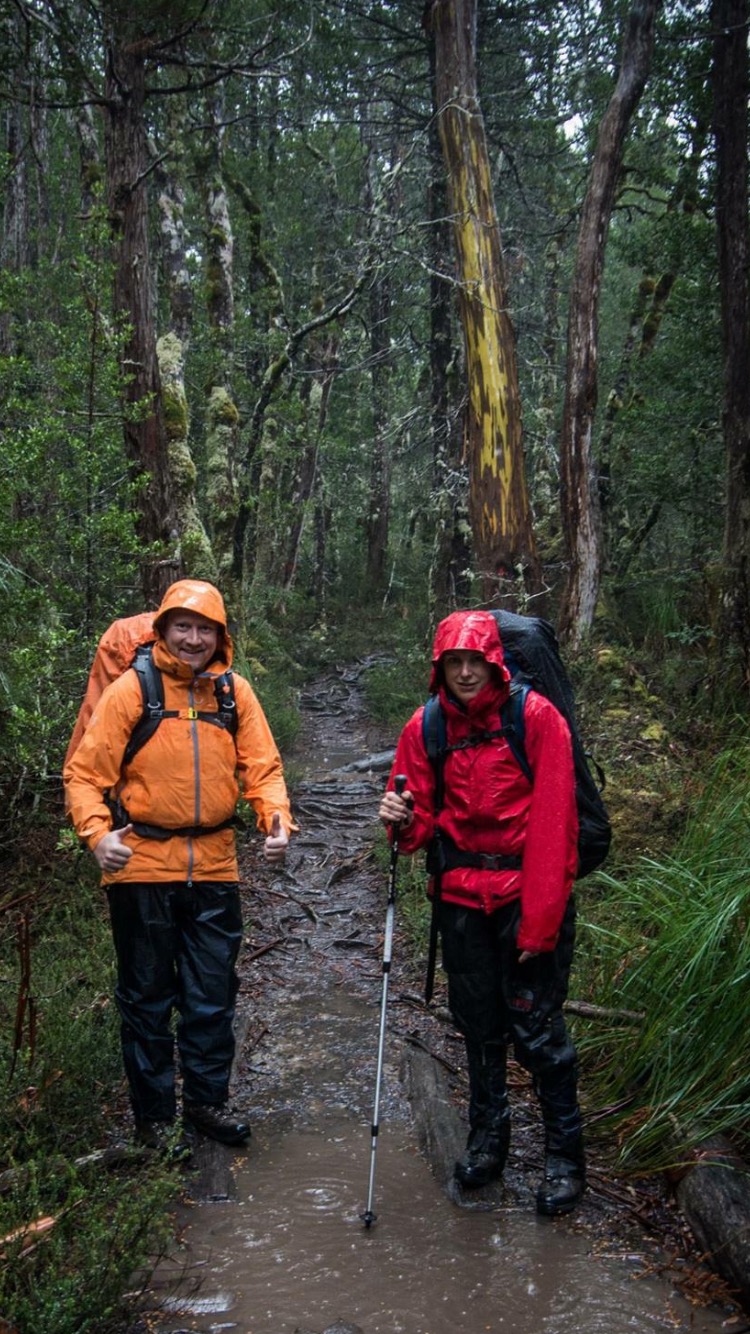With experience, comes knowledge. With knowledge, comes the impulse to share. At the very core of Impulse Adventures there is a desire to share our experiences with you first hand. We want you to come with us and experience our amazing destinations for yourself, but before you do, we’d like to share some of the things we’ve learnt over the years, to make your experience more comfortable, more enjoyable, and more rewarding.
Here you will find a collection of stories and guides ranging from exploring concepts of travel, to selecting the right gear, and getting prepared for your adventure.
The Impulsive Traveler

The Wild Woman's Adventure Guide - Vol 1 - Layers
Sun, 6th May 2018Top tips for hiking in winter - Choosing the perfect layering system
Does the cold weather stop you getting to the great outdoors? As women, we do generally feel the cold more than men, but this should not stop us exploring our spectacular back-country once winter sets in. The trick with braving these chilling temperatures is choosing an appropriate layering system.
Underwear
We are aware for everyday use cotton undies are best, however when you are spending the day hiking this is not ideal. Cotton soaks up sweat and will make you feel very damp and cold, not to mention the chafing that will occur. What you need is polyester, nylon or even better if you have the budget buy some merino briefs (yes you can get non-itchy merino underwear). The same concept goes for your bra and socks.
Base Layer
A base layer is a fitted next to skin (top or bottom) layer that is essential item in heat regulation. It is designed to wick away your sweat keeping you warm and dry. Same as your underwear, cotton is a big no-no. You need a base layer that not only draws away your sweat but also is quick to evaporate and dry. I have generally used merino for multi-day trips as I find them warmer and they do not retain odour, however synthetics are cheaper and do dry a little faster. Depending on conditions you could potentially be stripping down to this layer while you are hiking so pick a nice complimenting colour (e.g. Classic rainbow stripes).
Mid (insulation) Layer
There are many debates on whether fleece or down jackets are best for mid layer. As a cold fish, I go with the Mexican taco girls concept “Why not both?” If you are on a multi-day or a particularly cold trek it is worth taking both. A fleece is great, as it is breathable so while actively hiking it still allows your base-layer to do its job, but is also soft and insulating. Unless it is incredibly cold, down jackets are not great to wear as a mid-layer while moving as you overheat and sweat too quickly. They are however perfect to put on once you have stopped moving, the instant warmth and comfort you get from a big puffer jacket is heavenly, especially after a long day of hiking. If it is particularly cold at night I will layer with both the fleece and the down jacket.

Outer Layer
Always pack for the worst and hope for the best. The role of outer layer or shell is to protect from the elements you can face while trekking (wind, rain and snow). If hiking in winter you need water proof, not water resistant shells because once that cold water reaches your inner layers it is difficult to keep warm. It is worth spending the time and money finding a jacket with a material that is breathable (somewhat). My favourite outer shell is made with Gore-Tex (breathable and water proof material) with zips under the armpits for added airflow when things get steamy.

Pants
If weather permits soft shell (water-resistant) pants are a great way to keep warm, but be breathable at the same time. I generally wear a pair and have a dry pair with thermals at night. When weather is less ideal or you are being adventurous in the snow water proof pants are the go, unfortunately they are not as breathable and I usually wear a light pair of thermals underneath.

Accessories
Accessories are a girl’s best friend, and during winter hiking they are a necessity. Gloves and beanies should be easily accessible when not worn, I keep mine in my pants or jacket pockets if able. If you are hiking in high alpine or snow conditions I pack a fleece or merino beanie, neck-warmer, and gloves. If I am expecting chilly conditions with wind I will also add in wind and water-resistant gloves to add on top of my fleece gloves.

Staying warm at night
Make sure you have stayed hydrated throughout the day, have a warm hearty meal before bed. If you know it is going to be a particularly cold night, fill a BPA free and leak proof water bottle with warm water and take it to bed. I do not recommend boiling water (to avoid burns) and be careful that it is leak proof to prevent you wetting the bed. If all else fails break out a couple chemical hand and foot warmers.
Hopefully these tips will motivate you to get your warm bodies outside this winter. Remember avoid using cotton and layers are the key to keeping warm and dry. If you are still uncertain about heading into the back-county during winter check out the Impulse Adventures Weekend Warrior adventures, these trips are fully supported with guides, catering and equipment, taking the stress out of adventure!
Happy Adventuring,
Sam.
Sam is a highly experienced emergency and critical care nurse, expedition advisor, and Impulse Adventures' all round chief lady adventurer. She has trekked and Climbed high in the Nepalese Himalaya and New Zealand, explored remote regions of Greece and Italy and kayaked between uninhabited islands in the Indonesian Komodo National Part, not to mention countless walks in all seasons around Victoria and Tasmania. She loves to ski, rock climb and trek and can't stand feeling cold which has led her to becoming an authority on staying warm! This is her first blog in an up and coming series of tips for wild women looking to explore the outdoors, from weekend get aways to month long expeditions, you'll find these tips handy! If you have any questions about this blog you can contact her at sam@impulseadventures.com.au
